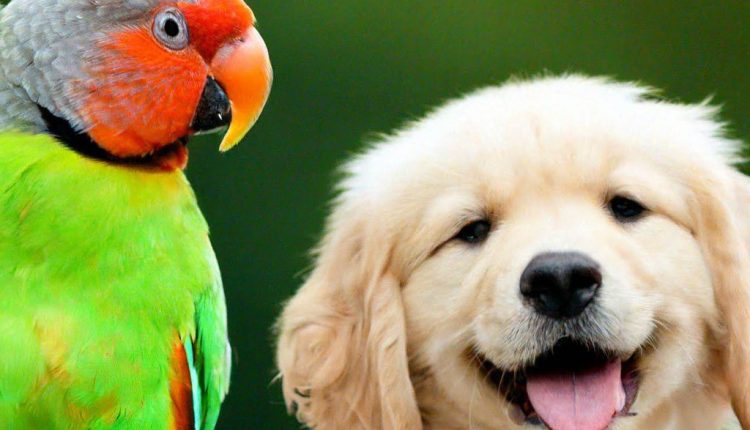Feathered Friends and Furry Companions: Harmonizing Your Household Pets
Creating a harmonious coexistence between a parrot and other household pets can be a challenge, but with the right approach and patience, it’s entirely achievable. Parrots are intelligent and social creatures that can successfully adapt to life with other pets, whether they be cats, dogs, or even small rodents. In this article, we will explore how to ensure a safe and friendly coexistence of your pets so that all of them feel happy and comfortable.
Assessing Temperament
The first step in the introduction process should be to assess the temperament of each animal. Some parrots may be more aggressive or shy, making them less suitable for living with other pets. Similarly, cats and dogs with high hunting instincts may pose a potential threat to a parrot.
Gradual Introduction
Once you’ve assessed the temperaments of your pets, start to introduce them slowly and cautiously. This can be done by placing the parrot’s cage in a room where your other pet spends a lot of time, allowing them to observe each other at a safe distance. Gradually reduce this distance, watching for the animals’ reactions.
Ensuring Safety
Safety must come first. Make sure that the parrot has a safe haven to retreat to in case of stress or fear. When you decide to allow the pets to interact face-to-face, do it under strict supervision to intervene at any moment if necessary.
Playful Interaction
Play can be an excellent way for a parrot and other household pets to establish a connection. Use toys suitable for both types of animals to stimulate positive interaction. It’s important that each animal feels included and receives attention from you during these play sessions.

Training and Education
Training and education can play a key role in the successful coexistence of a parrot with other animals. Teaching obedience commands like “sit” or “stay” can be useful for dogs living with parrots. For parrots, learning commands that allow you to control their behavior in the presence of other pets can be beneficial.
Respecting Personal Space
Each animal requires its own space where it can rest and feel safe. Ensure that your parrot has its cage placed in a quiet corner, away from other household pets. Similarly, cats and dogs should have their beds or houses where they can be alone. Demarcating territories will help minimize potential conflicts and give each animal the chance to adjust to new living conditions.
Monitoring Health
It’s important to regularly check the health of all your pets to ensure that their cohabitation isn’t negatively affecting their well-being. Pay close attention to the parrot’s behavior and appetite, as well as any signs of stress or illness in other pets. If any concerning symptoms are detected, it’s essential to consult a veterinarian immediately.
Maintaining Cleanliness
Cleanliness plays a critical role in the health of all household pets. Regular cleaning of the parrot’s cage and the living areas of other animals will help prevent the spread of diseases and create a favorable environment for their coexistence. Additionally, ensure that food and water containers are clean and not accessible to pets other than their owners.
Sharing Attention
Parrots, like most pets, require attention and care from their owners. Spend time with each of your pets so they don’t feel neglected or deprived of attention. Balanced attention will help maintain positive relationships between the animals and strengthen their trust in you as an owner.
Conclusion
Acclimating a parrot to other household pets is no easy task, but it is achievable with the right approach and ample patience. The key is to ensure the safety of all participants, consider their individual characteristics and needs, and be prepared for a lengthy adaptation period. Mutual respect, patience, and care will allow for the harmonious and happy coexistence of your diverse household pets.

